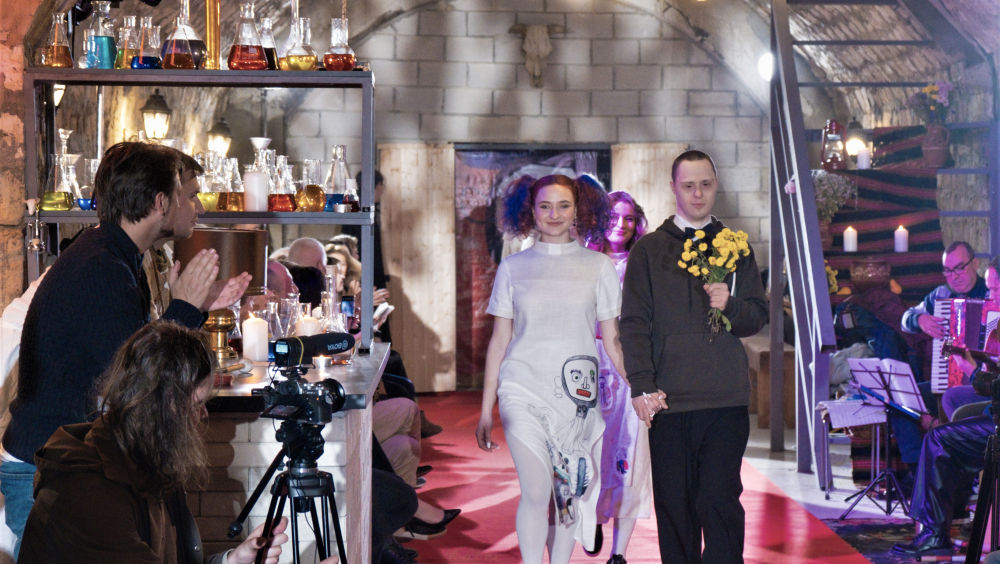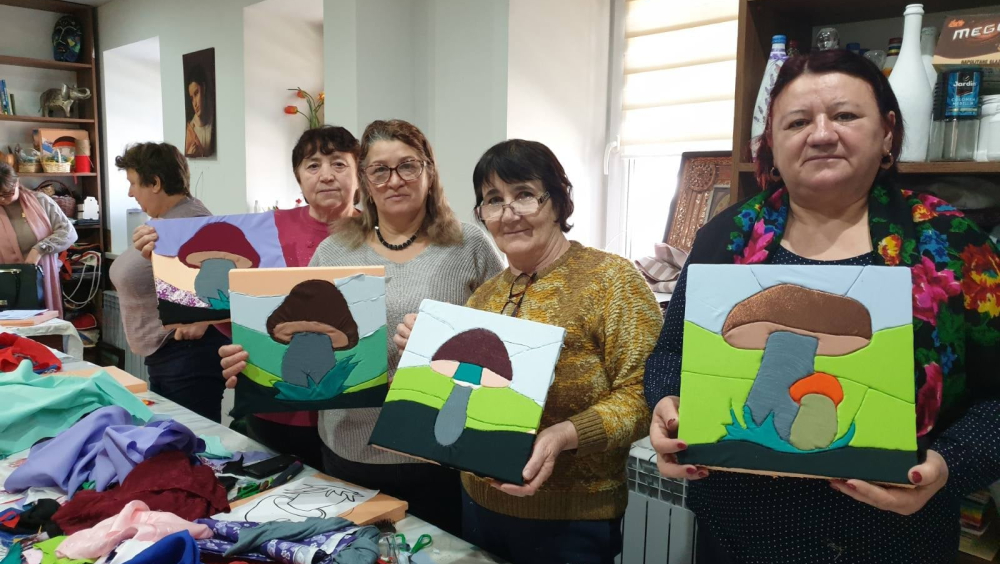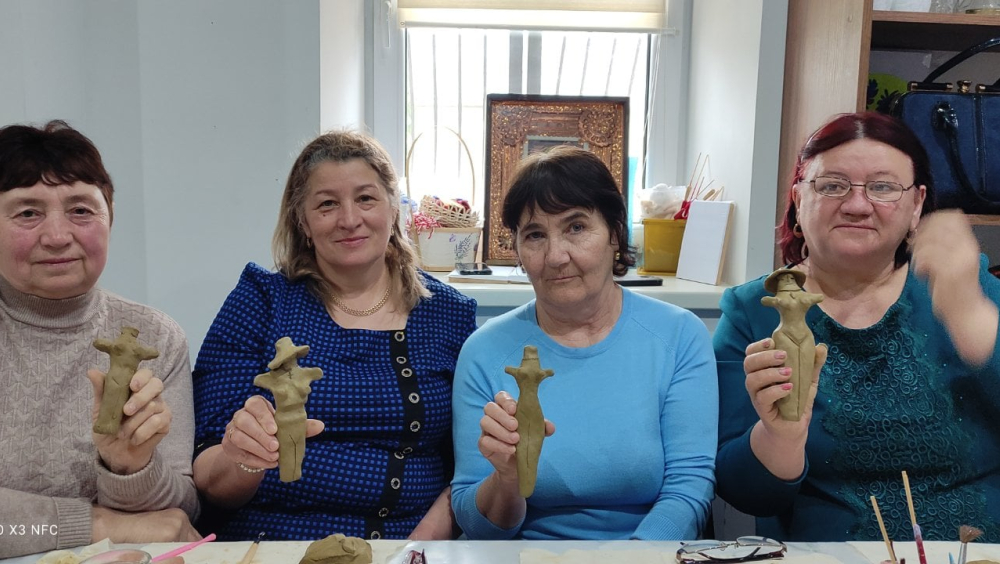Alta Civilizatie: Talents of people of disabilities - in action
The plight of people with disabilities, particularly with “mental” disabilities is particularly dire worldwide, and particularly in Europe. Despite some efforts to provide assistance on charitable and therapeutic basis, they remain in the margins of society, subject to stigma and alienation. The wide spectrum of those who are deemed “mentally ill” – from those diagnosed with Down Syndrome to schizophrenia are considered deficient intellectually, unpredictable emotionally, and generally a drag on society.
VRC-Moldova does not provide clinical services. Instead, it is operating under the principles that create, culture-related, and productive work is the most rehabilitative activity. Consequently, the clients of VRC-Moldova are engaged in such activities, as making replicas of ancient artefacts from the great neolithic European culture, called – Carbuna-Cucuteni-Trypillian Culture; traditional Moldovan crafts, and artifacts based on the creative expression emanating from the very depth of ancestral memories of the Moldovans – the heirs to the Roman, Dacian, Celtic, and other European traditions.
The connection between the past and present is crucial for developing self-efficacy and the beautiful artefact that are created by the clients is the testimony to the creativity of the people who are considered to be with “limited abilities”, their self-efficacy, and destigmatization. Below we will provide stories of some clients who came to the realization of their abilities, potential, and strength of talent.
This is a film about VRC-Moldova:
https://www.youtube.com/watch?v=hO8SSTdKtX0
Here is some real-life stories from VRC-Moldova
1. Antosha is a gentleman, age 30, who was diagnozed with Down Syndrome. His IQ is approximately is 25. He is barely verbal. The only thing can say, is "I love you". He comes with his mother to VRC-Moldova for the past three years. When he came to the agency he was very withdrawn and depressed. We gave him different artistic tools and he picked markers and started drawing obsessively (please see photos attached). At some point, we realized that his abstract drawings are remarkable in their color spectrum, shapes, and cohesion. We decided to develop a line of clothing based on Antosha's drawings. A long story short, we had a fashion show in the Village of Carbuna where the students of the State University of Moldova paraded the dresses based on Antosha's drawings to the vast acclaim.Toward the end of the event, Antosha was called in front of the audience and given the microphone. His speech was an indecipherable song that ended with "i love you". Antosha looked happy and composed. People in the audience were crying. This was our agency's stellar moment. The marginalized man with the label of Down Syndrome came out of his shell with dignity and pride.
This is the link to the news item featuring Antosha: https://protv.md/actualitate/un-tanar-cu-sindromul-down-vorbeste-lumii-prin-arta-talentul-acestuia-a-fost-observat-de-un-designer-de-la-noi-care-a-lansat-o-colectie-de-rochii-inspirata-din-picturile-artistului-video---2629973.html?fbclid=IwAR2nKagUN3gL1DQPDpRI7W91R44eBTPCpBWeZOWvOV3XLYkL-U7r6xBvd94
2. Our first product that we started working on back in 2016 at the State Psychiatric Hospital (we later moved to a community-based facility) was a Trypillian Zeitsa (goddess) - clay figurine that was found in abundance in the soil of Moldova - the legacy of the ancient Carbuna-Cucuteni-Typillia culture. This artefact is the archetypal image of the mother-goddess, later found in abundance in various representaitons practically in all European cultures. The clients were given the task making replicas (see attached photos).
Lydia ia a woman of 40 - in and out of psychiatric hospitals, drug rehab clinics, and homelessness. She never had a stable period in her life since she was a child - until she started coming to VRC-Moldova.
Since she was referred to VRC-Moldova, she became one of the most responsible and disciplened of our clients. The supportive envirionment of the agency not only offered the opportunities fo creative expression but also provided Lyida nd her peers witih warm and sdupportive environment And Lydia thrived. She is in remission (no psychiatric hospitalizaitons ) and sobriety for the past two years. Her hygiene and affect improved drastically. She became an employee of VRC-Moldova.
An interesting story related to her goes as follows: Lydia has a younger sister who could not conceive for seven years. Lydia claims that when she presented her sister with "zeitsa" - replica of the clay mother-goddess, her sister managed to conceive a month later. Miracolo!
Natalia Platonova
(373) - 673-48855
platonova.natalia@chisinau.edu.md
The Eropean culture, in its values, beliefs, and practices is based on the incredibly rich and complex European culture. The country of Moldova is not only the part of the European heritage but also the gateway to Europe. It stood in the way of many invaders from the East - struggled, resisted, and was ravaged. At the same time, being the boundary state, it absorbed influences from many European cultures that criss-crossed Moldova in defending and controlling this boundary state. The Moldovan culture absorbed the germanic influces (the Goths and german agricultural settlers); Polish neighbors (who clashed here with the Mongols); Hungarians (who founded the first medieval Moldovan dynasty); the French (who greatly influenced the growth intelligentia during the interbellum period); Greeks (who ruled this land during the Fanariot period); Italians (who built cities in the middle ages in the deltas of Moldovan rivers), and the Slavs (whose dispersion in Eastern Europe proceeded along the south-eastern axis).
Morover, it can be argued that the Moldovan land is the cradle of the European civilizaiton as it is the epicenter of the Carbuna-Cucuteni-Trypillian culture that is dating back to the fifth millenium BC and was the progenitor of the cultural dispersion to the rest of Europe.
To this day, Moldova is the boundary state where the battle for the hearts and minds is taking place. This is the place where the values of the civil society are clashing with those of xenophobia, intolerance, and stigmatization.
VRC-Moldova is proud of its ability to parlay the replicas of historical artifacts, native folk crafts, and archetypal imagery into the works of art and social entrepreneurship created by the people with "mental disabilities". This work goes a long way toward proting the European values not only in Moldova but to the rest of the post-Soviet realm.


